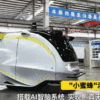On April 10, Astribot announced that it had completed the A and A+ rounds of financing in succession, with an amount of hundreds of millions of yuan, led by Jinqiu Capital and Ant Group, and followed by existing shareholders such as Yunqi Partners and Dalton Venture.
Established in Shenzhen in December 2022, Astribot had completed multiple rounds of financing before that. In March and October 2023, Astribot completed angel rounds of financing, with investors including Yunqi Partners and Decent Capital. In June 2024, the company completed tens of millions of dollars in Pre-A rounds of financing, led by MPCi, and followed by industrial capital such as Dalton Venture and Qinghui Venture.
It is reported that the core team of Astribot has a total of 6 people, all from Tencent RoboticsX Laboratory. In addition, team members also come from Google, Huawei, DJI, UBTECH and other companies. Lai Jie, the Founder and CEO of the company has 16 years of experience in robot research and development. He joined Baidu in 2014 and was a member of the Xiaodu robot research and development team. Later, he served as the head of Baidu’s Xiaodu robot team. Then, he joined in Tencent as the No. 1 employee of RoboticsX. During this period, he led the research and development of wheel-legged robot Ollie and a number of new robots. Dai Yuan, the Co-founder, obtained a doctorate degree from the University of California, Los Angeles, focusing on robot perception. She has also published more than 30 papers in top journals such as Nature Comm and Science Adv, and has more than 70 robot patents. She also joined in Tencent RoboticsX Laboratory in 2018 like Lai Jie. Astribot advocates for “Design for AI” and is committed to creating an AI robot assistant with human-level operation capabilities through an integrated hardware and software system architecture, promoting the world model through the co-evolution of “body + data + model”, and promoting the large-scale application of general embodied intelligence technology in various industries. In terms of products, Astribot launched the full-stack self-developed Astribot S1 robot. By integrating the original rope driven transmission design, S1 has overcome the technical bottlenecks of high inertia, low energy efficiency, and low transparency of traditional rigid robots, and achieved performance such as a load-to-weight ratio of 1:1, an end effector speed of over 10m/s, and a speed of up to 32.8 feet per second.
Astribot S1 has a design similar to human joints, with 7 degrees of freedom in one arm, which can simulate the trajectory of human movement. In terms of AI capabilities, S1 has the ability to perceive, recognize, and make real-time decisions in complex environments, as well as intelligent understanding and multimodal interactive execution capabilities, realizing the generalization of general operations at the object, task, and environment levels. Astribot S1 can complete a series of operations such as scooping batter, closing lids, and turning knobs, and can also complete complex skills such as brewing Kung Fu tea, playing the dulcimer, conducting calligraphy, and drawing sugar paintings.
At present, Astribot S1 has undergone three iterations and has been implemented in various leading universities, enterprises, data centers, etc. At the same time, the team is constantly optimizing the self-developed end-to-end large model, seeking key breakthroughs in the embodied base model and migration capabilities, and will release more practical cases in the future.
Ant Group continues to increase investment in embodied intelligence
Among the companies that have cross-border layout of embodied intelligence, Ant Group has been dynamic, not only establishing related subsidiaries, but also investing in other embodied intelligence companies.
In addition to Astribot, which was invested in this time, Ant Group also led the A round of financing for GalaXea AI. GalaXea AI has raised more than $100 million in total financing, quickly becoming one of the leading domestic embodied intelligence startups.
GalaXea AI was founded in September 2023. Gao Jiyang, the founder of the company, graduated from Tsinghua University with a bachelor’s degree and then studied for a doctorate in Computer Vision at the University of Southern California. After graduation, Gao Jiyang worked at Waymo, Google’s driverless car company, and Momenta, an autonomous driving company.
In addition, in mid-February, Ant Group opened a number of embodied intelligence positions on its recruitment platform, including algorithm engineers, humanoid robot hardware structure engineers, simulation system development engineers, and humanoid robot motion control engineers.
According to Zhu Xing, CEO of Ant Lingbo Technology, the company is an embodied intelligence subsidiary of Ant Group, which is committed to focusing on the service field, creating industry-leading robot products, bringing robots into life, and becoming everyone’s good helper.
In addition, according to a new round of deepening strategic cooperation agreement recently signed by the Shanghai Municipal People’s Government and Ant Group, Ant Group will increase its investment in cutting-edge technology research, actively participate in the construction of Shanghai’s artificial intelligence industry ecosystem, and help build Shanghai International Science and Technology Innovation Center.
Today, the focus of the industry is gradually concentrated on two key links – “brain” and “body”. The “brain” represents the core algorithm and perception ability of the agent, and is the driving force for embodied intelligence to achieve autonomous decision-making and action; while the “body” is the construction of the physical entity, which directly determines whether the agent can effectively interact with the environment and perform tasks.
Who will be the leader of embodied intelligence in the future? Will it invest more resources in the research and development of algorithms and intelligent “brains”, or focus on optimizing the physical “body” for efficient execution? Whether the embodied intelligence is moving towards a more intelligent and precise direction from the perspective of financing enthusiasm or technological breakthroughs. The choice of capital will also largely determine the future competitive situation and development direction of the industry.





